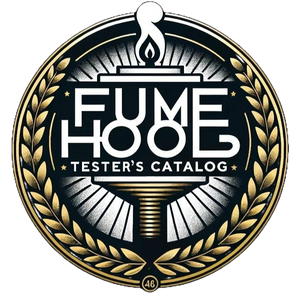
We’ve always done it the wrong way: The safety risks of normalized deviance in working with fume hoods.
That is how “nothing bad happened” becomes “nothing bad will ever happen.”
In other words, everything is ok until it isn't
We often underestimate the risks associated with working with laboratory fume hoods, treating their use as routine without appreciating the safety protocols that need to accompany them. But when there isn’t an immediate consequence to unsafe practices, it’s easy for “nothing bad happened” to become “nothing bad will ever happen.” This dangerous assumption leads to what’s known as “normalized deviance”, where ignoring safety policies becomes part of the norm. However, in a lab environment,
the question isn’t if harm will occur, but when it will.
The term “fume hood safety” often feels vague, but in essence, it’s about exposure control and accident prevention. Whether we’re trying to prevent chemical exposure, explosions, or runaway reactions, safety starts with making informed, cautious choices. And with fume hoods, these risks aren’t only immediate; many develop over time, manifesting only after years of exposure. Protecting yourself from potential harm now means you’re safeguarding your future health—a decision your future self will thank you for.
Why Awareness, Training, and Testing Are Essential
In laboratory settings, complacency is the enemy of safety. Fume hoods are often misunderstood or misused, leading to an array of risks: fires, explosions, chemical spills, electrical hazards, burns, and cuts, among others. These hazards are common, yet too often ignored. To combat this, we need to raise awareness among users and provide clear, actionable steps to manage and mitigate these risks.
Raising Awareness:
The first step to safer fume hood use is awareness. It’s essential to fully understand the chemicals you’re working with, especially by consulting their Safety Data Sheets (SDS). Having a clear plan in case of emergencies—knowing what steps to take if something goes wrong—is invaluable. This awareness empowers you to make safer choices in real-time.
Training and Testing:
There is truly no substitute for rigorous training and testing. Even seemingly minor mistakes can lead to severe incidents. When lab personnel are well-trained and hood performance is routinely tested, they’re better equipped to recognize risks and act effectively. In many cases, accidents result from overlooked hazards or improper handling—both of which can be prevented with thorough training.
Developing habits around preventive safety measures can reduce the likelihood of incidents. This includes planning for potential hazards before beginning experiments, routinely inspecting fume hood functionality, and remaining vigilant about chemical properties and reactions.
But the real reason we have fume hoods is because they are an exposure control device. They are suppose to protect users from harmful exposures.
Chemical Exposure: The Silent Risk
One of the most misunderstood aspects of fume hood safety is chemical exposure. Unlike fires or explosions, the effects of chemical exposure may not be immediate; they often accumulate over time, leading to serious health consequences years down the line. This reality makes consistent safe practices essential. By taking appropriate precautions today, you’re ensuring better health outcomes in the future—decisions you’ll thank yourself for.
Remember: Safety Has No Redo Button
In the event of an incident, there’s no “redo” button to undo the consequences. It’s vital to make safe choices today to prevent the kinds of accidents that we can never take back. From frequent training to reviewing SDS information for every chemical used, small actions add up to a larger culture of safety.
Laboratories will always pose inherent risks, but we have the tools and protocols to manage them responsibly. Prioritizing fume hood safety today means you’re taking control of your long-term health and well-being in the lab environment.
We say, “Seeing is Believing” we developed Tri-Color as a way to test easily and inexpensively. Tri-Color is very visual and the results are actionable.
True containment is determined by dynamic conditions in your lab. Realistic dynamic containment testing is challenging, we developed the Tri-Color system to provide a more accurate validation of containment in the conditions that exist in your lab..
Warmest regards from the entire Fume Hood Certified Team,
Stay safe, and remember: your future self will thank you
Chip Albright
Founder and President
Fume Hood Certified, LLC.
PO Box 71477
Phoenix, AZ 85050.
Email: Chip@fumehoodcertified.com

